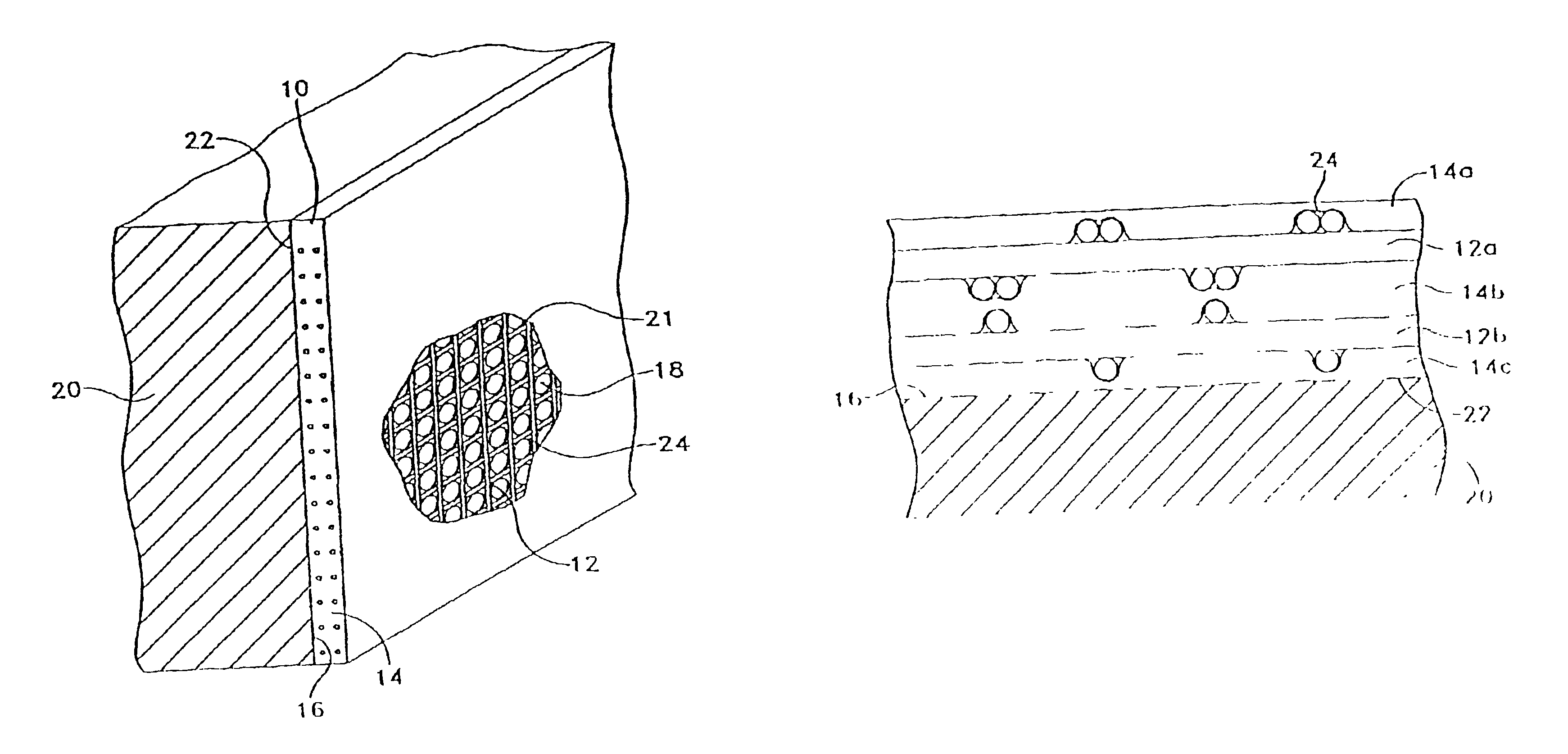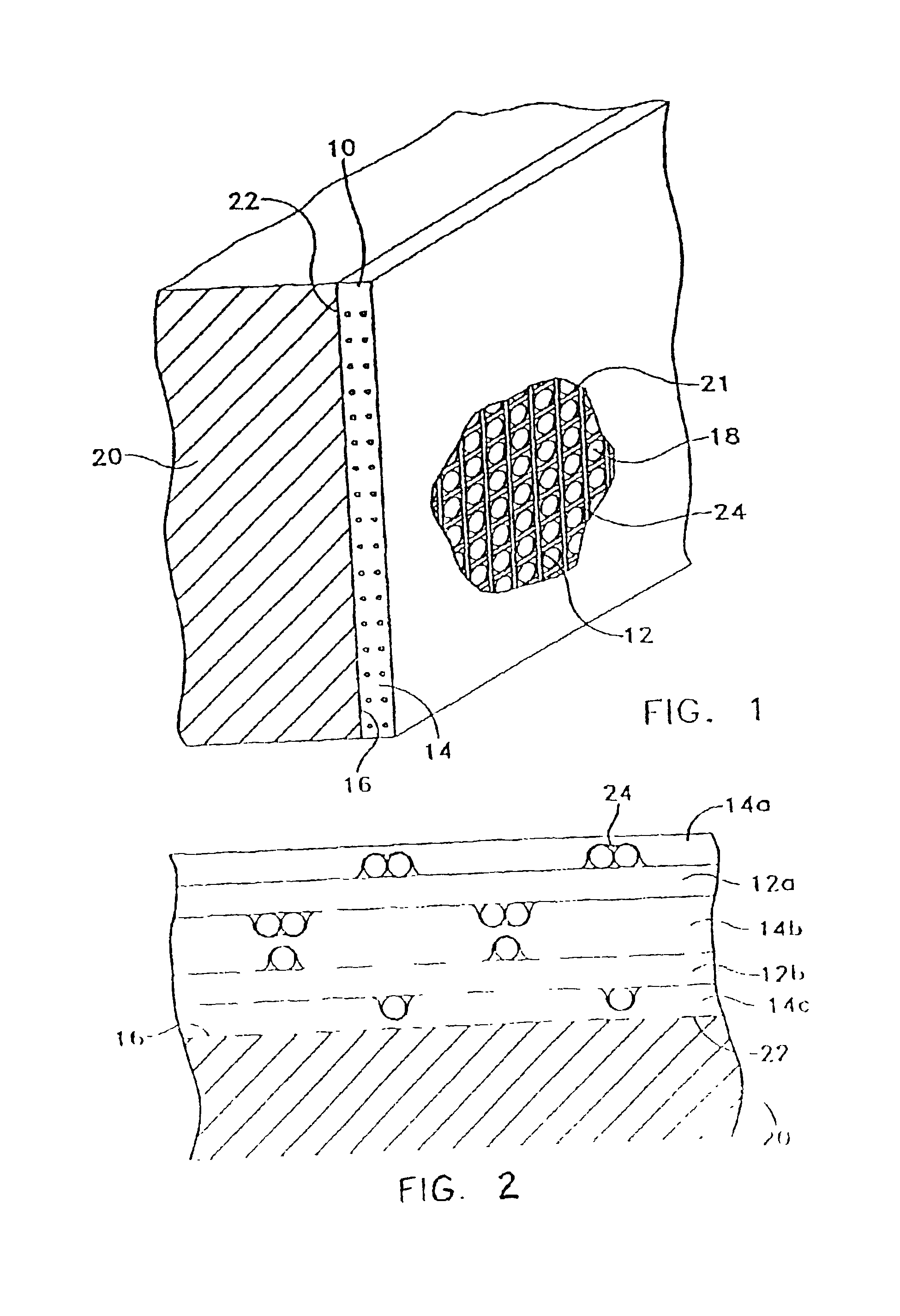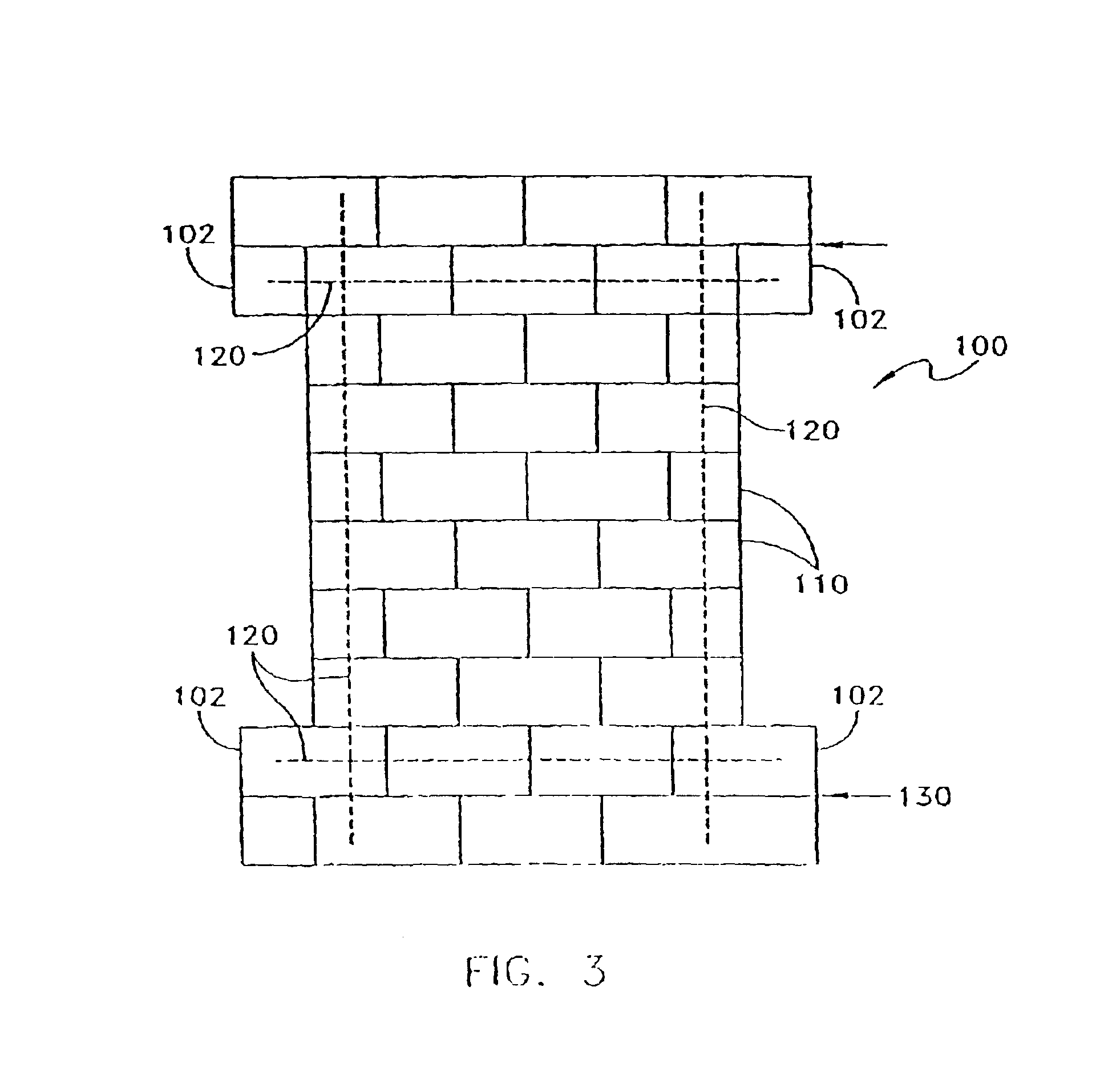Inorganic matrix-fabric system and method
a technology of organic matrix and material, applied in the direction of foundation engineering, synthetic resin layered products, water-setting substance layered products, etc., can solve the problems of structural failure of concrete structures, affecting the strength of concrete structures, and inadequate compression of concrete structures, so as to achieve high degree of chemical resistance, high strength retention, and high degree of alkali resistance
- Summary
- Abstract
- Description
- Claims
- Application Information
AI Technical Summary
Benefits of technology
Problems solved by technology
Method used
Image
Examples
specific examples
[0079]This invention and its advantages are further described with reference to the following specific examples. The examples are merely intended to be illustrative and not to be construed as limiting the scope of the invention. In the following examples the method as described above was employed and tested on masonry wall and triplet samples. Results were obtained which indicate significantly improved seismic strengthening for the overall support system.
example 1
[0080]Referring to FIG. 3, a lightly reinforced sample CMU block wall 100 (wall 1) was constructed from standard 8×8×16 in. CMUs 110. The CMUs were constructed of a type N mortar, consisting of 1 part sand, 3 parts Type I Portland cement, 1 part hydrated lime, and water in sufficient quantity to make the mortar mix workable by the technician. The wall was ten courses high with the top two and bottom two courses 16 in. wider than the central six courses forming an “I” shape. All of the blocks in the top two and bottom two courses were fully grouted to get better load transfer from a load frame (see FIG. 4) during testing and increase the probability of wall failure not occurring within the wide top and bottom sections of the wall. A #4 steel reinforcing bar 120 was placed in the cells surrounding the central pier. All blocks containing steel reinforcing bars were fully grouted. Three-eighth inch face shell mortar bedding was used on the CMU blocks with the cross webs of units adjacen...
example 2
[0090]A second wall sample 200 (wall 2) having a reinforcement system applied was tested using the same testing method as described above with respect to wall sample 1. Wall 2 was made in accordance with the materials and procedure described in Example 1 and the reinforcement system applied to wall 2 was made with the materials described in Example 1. The only difference between Examples 1 and 2 is with respect to the method of reinforcement application. In applying the reinforcement system of wall 2, the first glass fibrous layer was oriented so that the weft direction of the fabric having two rovings was at a 45° angle to the bottom of the wall running from the top left corner (US) to the bottom right corner (LN). The second glass fibrous layer was oriented so that the weft direction of the fibrous layer was aligned perpendicular to the bottom of the sample wall 200.
[0091]Referring to FIG. 8, the reinforcement of wall 2 began to show cracking at 0.3 inch horizontal displacement in...
PUM
| Property | Measurement | Unit |
|---|---|---|
| lengths | aaaaa | aaaaa |
| linear density | aaaaa | aaaaa |
| softening temperature | aaaaa | aaaaa |
Abstract
Description
Claims
Application Information
 Login to View More
Login to View More - R&D
- Intellectual Property
- Life Sciences
- Materials
- Tech Scout
- Unparalleled Data Quality
- Higher Quality Content
- 60% Fewer Hallucinations
Browse by: Latest US Patents, China's latest patents, Technical Efficacy Thesaurus, Application Domain, Technology Topic, Popular Technical Reports.
© 2025 PatSnap. All rights reserved.Legal|Privacy policy|Modern Slavery Act Transparency Statement|Sitemap|About US| Contact US: help@patsnap.com



